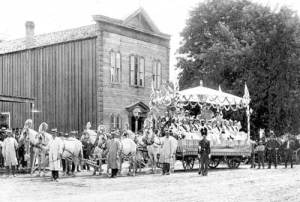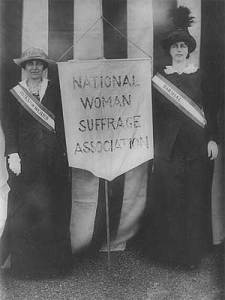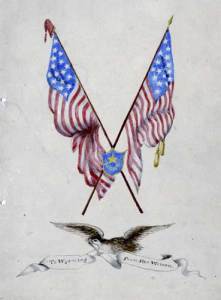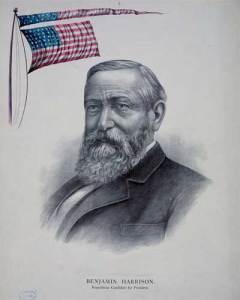Wyoming and Idaho raced to join American flag

In July 1890, 125 years ago, two territories – Wyoming and Idaho – joined the Union and earned the right to have stars added to the American flag to signify their new statehood. But it didn’t happen without some glitches involving a national law and a national holiday, and one of the states came up a little short.
First, Wyoming had to prove that it had enough people to qualify for statehood. Skeptics thought the state-to-be was fiddling with its census to sneak in. The territory had another iffy situation: It allowed women to vote, while the U.S. did not. Many wondered if Congress would okay the state’s admission despite that discrepancy.

The National Woman Suffrage Association decided to press the issue by passing a resolution that recognized Wyoming as “the first sovereign power on earth where no distinction is made between men and women in the enjoyment of political rights.”
The organization proudly noted that Wyoming’s becoming a state was “particularly indicative of the advancement in political rights made by the women of our commonwealth.” It also promised to raise money for the presentation of a new American flag to Wyoming in which the new state’s star “will shine bright, not only as indicative of our joy, but also as a star of hope to our sisters throughout the nation.”

The next stumbling-block in the way of the two states’ admission was a federal law about when a state entered the Union. A new state admitted to the United States on or after the Fourth of July had to wait a full year for its membership to be signified by an additional star on the Star-Spangled Banner.
Idahoans almost undid themselves. They hoped that they would officially become full citizens on July 4; any other date seemed like a disappointment. President Benjamin Harrison told the new state’s delegate that he could have the Fourth as the date of admission, but no star would be added until 1891. Or he could opt for a July 3 signature by the chief executive and immediate admission.
The delegate made a one-man decision, and Harrison signed the new state into the Union on July 3. Disappointment back home was soon replaced with rejoicing when Idahoans understood what happened.

In a surprise move, the new 43-star American flag was flown over the U.S. Capitol, even though Congress was not in session. That rare trick required the cooperation of federal carpenters. With the House and Senate adjourned, the usual flagstaffs were off-limits, so four makeshift poles were hurriedly erected to fly the new flag.
That banner also included stars for four other states that had been admitted after the previous Fourth of July: North and South Dakota, Montana, and Washington. As a result, there are no 39-, 40-, 41- or 42-star flags.
Wyoming was not so lucky and didn’t join the United States until July 10. The men and women out west had to wait until 1891 for a 44-star flag to be flung to the breezes on that Fourth of July.
(Next week: A look at the Idaho and Wyoming state flags – and more.)

I have a original hand made 43 star flag.
WOW! Would love to see a photo of that – if you can, send to [email protected]